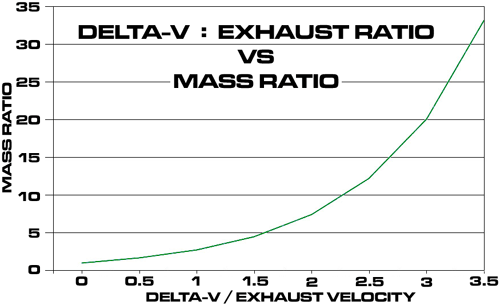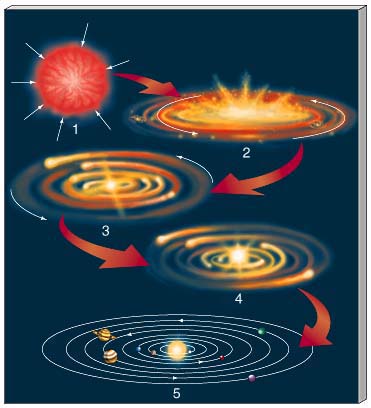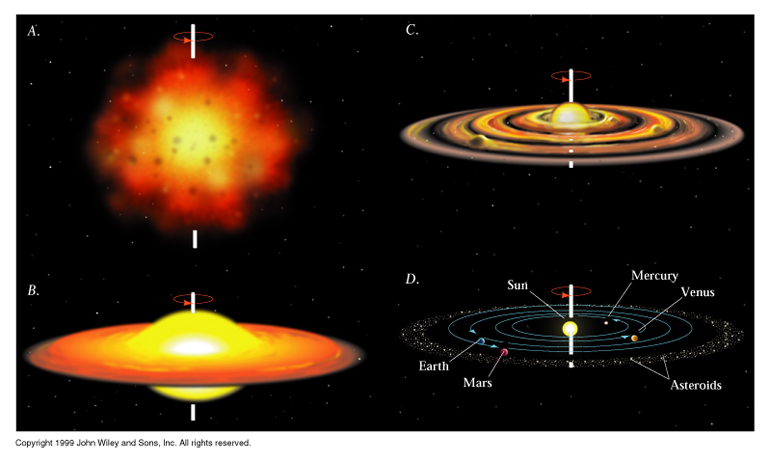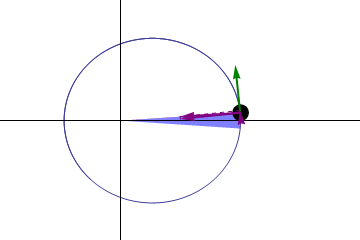I’m just a background character in someone else’s story.
Month: May 2016
Energy-momentum and quantum postulates.
Energy-momentum is the following
Quantum postulates:
Natural units:
What does this mean? The square of the difference in oscillations per unit time and unit space is equal to the rest mass/rest inertia?
Remember: omega is the number of oscillations per unit time and ‘k’ or the wavenumber is the number of oscillations in space. These can be converted to the better known wavelength and frequency.
And if we are in the reference frame of the wave this changes to:
Or the number of oscillations per unit time (temporal frequency) is equal to the inertia of that object?
Some wave basics:
Wavenumber (k) = spatial frequency
Angular frequency (omega)
Wavelength (k)
Frequency (omega)
What happens to a rotating sphere? Does it turn into an ellipsoid?
A sphere falling in a gravitational field turns into an ellipsoid with semi-major axis parallel to the gravitation field.
A rotating sphere also turns into an ellipsoid? According to the ehrenfast paradox.
If you are on/in the ellipsoid, can you say if you are in a gravitational field or are you rotating? Welll in the rotating frame you can find fictitious forces.
Is space rigid? Is spacetime rigid? What does rigidity mean? Fluids vs Solids?
The centrifugal force pushes out, but the geometry flattens it. I don’t get it.

Rotations in space and space-time
Space metric:
For a rotated coordinate system we can transform the coordinates by:
Because of the invariance of the distance we have the following:
This means that if we substitute the transformation-formula’s in the space-interval, we have to get the interval expressed in the other coordinates.
Space-time metric:
For a rotated coordinate system we can transform the coordinates by:
Notes:
In hyperbolic geometries are exponentials hidden. Where do exponentials show up in other areas of physics? Thermodynamics, entropy, statistic, the wavefunction and radioactive decay! These processes are all physically linked to time.
An interesting coincidence is that the wave equation looks a bit like the minkowski metric, although equal to zero.
List of hyperbolic relativity formula’s:
Adding angles is like adding velocities:
Velocity addition formula.
I really think that a good course on special relativity starts with the basics of hyperbolic geometry.

Relaxing gif

By Rebecca Mock: http://rebeccamock.tumblr.com/

Rocket fuel problem as an analogy to E=mc2
Analogy with rocket fuel
The dreaded problem with rockets is that if you want to go faster you need more fuel. But by taking more fuel on to the rocket, you are increasing your mass. Thus you need more fuel to take with you to accelerate that increased mass. You can see that taking more and more fuel reduces the speed gained by that fuel. For example the Soyuz-rocket was 91% fuel! So you used most fuel to accelerate other fuel.

The extra fuel you pack to overcome the inertia, also adds inertia.
The fuel is just like Energy for moving bodies
The original paper introducing E=mc² actually also is named: ‘Does the Inertia of a moving body depend on its Energy content?’ Newton would have answered ‘no’. A airplane moving at 500 km/h has just as much inertia (it’s mass) than an airplane at rest. However, this is not true.
The extra kinetic energy of a moving body has inertia itself. It has ‘weight’. Just like the extra fuel you pack has ‘weight’. This is why there is an upperbound to the max velocity you can achieve. Check the graphs below for better understanding and compare it to the rocket fuel graph.

Entropy is the reason the solar system is ‘flat’.
Why is the solar system flat?
Because of two reasons:
- Angular momentum is conserved
- Entropy has to increase


So the process goes like this:
- We start with a gigantic spherical gas cloud somewhere in space
- The gas cloud has by chance a net rotation
- Thus by chance has a net angular momentum
- Because of gravity, over time the gas cloud will collapse
- Thus it will reduce its radius over time
- Because of friction part of the gas motions will be converted into heat and radiated away
- Any motion NOT perpendicular to the radius vector AND axis will cancel out.
The matter sphere around a sun becomes a disk over time because the rotational motion can’t cancel out and the motion parallel to the axis of rotation can cancel out. Over time that will result in a disk.
Why does the motion parallel to the axis of rotation cancel out? Because it can, because of friction.

.
One-dimensional Maxwell equations:
Maxwell equations with my own notation:
(It doesn’t produce inverse square)

Addiction
The ingredients for addiction are:
- Superstimulants
- Paradox of wanting damaging rewards
- Craving
- Tolerance
- Withdrawal
- Coping with stress and emptiness
- Genetics
The balance between immediate rewards and delayed rewards are governed by dopamin.
Genetics: Being vulnerable to addiction appears to run in families. Multiple genes have been found that are associated with addiction, however there is no ‘single addiction-genes’. They are also not specific for addiction, since the most important gene for alcoholism seems to also increase the risk of bipolar disorder. Other shared diseases are conduct disorder and antisocial personality.
There are some dopamin-related genes involved. Most often the genes result in lower dopamin activity, making these people ‘dopamin-starved’. They are hungry for dopamin-impulses, so they exhibit more reward-dependent behavior.
Craving: A distinguishing feature of any addiction is craving—an insistent search for the activity. Even after a long period of abstinence, exposure to cues associated with the substance triggers a renewed craving.
Would it be possible to erase the connection between a drug and the cues associated with it? A reawakened memory enters a labile, vulnerable period when it can be either reconsolidated or weakened. Reconsolidation requires protein synthesis, and certain drugs, including propranolol, interfere with protein synthesis and therefore prevent reconsolidation
Stimulants for these cravings are lit cigarettes, videogame or alcohol. They are addiction cues. Often people have multiple addictions.
Tolerance: The tolerance is partly learned and location-dependent. In other words, you are more tolerant of alcohol in a bar than somewhere else.
Withdrawal: As the body comes to expect the drug under certain circumstances, it reacts strongly when the drug is absent.
Evidently, receiving an addictive drug during a withdrawal period is a powerful experience. In effect, the user—rat or human—learns that the drug relieves the distress caused by drug withdrawal. That learning can generalize to other situations, so that the user craves the drug during other kinds of distress
One theory is that addictive behavior is an attempt to avoid withdrawal symptoms. However, that cannot be the whole explanation. Ex-smokers sometimes report strong cravings months or years after quitting. Cocaine is addictive even though the withdrawal symptoms are mild. Gambling can be a powerful addiction, even though no substance is withdrawn.
Coping: A modified explanation is that someone with an addiction learns to use the substance (or gambling habit or whatever) to cope with stress.
The paradox:
Addiction is a paradox, because in it organisms want to do behaviour that is damaging them. The cost and risk are greater than the pleasure. Often addicts also report more distress than pleasure, but nevertheless they still indulge in the cravings.
Repeated exposure to addictive substances alter the nucleus accumbens in such a way that they become more responsive to these rewards instead of other rewards. The ‘Reward-reinforcementsystem’ becomes ill and the addiction ‘highjacks’ your reward system. The reward system is central in behavior.
The effects of addiction on other parts of the brain:
Repeated exposure to addictive drugs also disrupts activity in the prefrontal cortex and other areas responsible for restraining impulses (B. T. Chen et al., 2013; Goldstein & Volkow, 2011). Ordinarily a decision whether or not to do something is a matter of weighing the pros and cons, for rats just as for humans. However, after an addiction develops, the weakened prefrontal cortex fails to overrule the reward-seeking areas. After rats develop an alcohol habit—yes, rats as well as people are susceptible—they continue drinking alcohol even if it is adulterated with a bitter taste or if it is accompanied by foot shock
Wanting and liking: Psychologists distinguish between “wanting” and “liking” (Berridge & Robinson, 1995, 1998). Ordinarily, you want something that you like and like what you want, but not always. You might want medicine but not enjoy it. You know you would enjoy a fattening dessert, but you might not want it. Similarly, someone with an addiction strongly wants something and is preoccupied with thinking about it, but may or may not “like” it.
Superstimulants: What determines of a certain type of behaviour, stimulus or drug is addictive?
- Chemical:
- Alcohol, drugs (cocaine, heroin, weed) , medicine (Opiates, benzodiazepines)
- Behavior:
- Gambling, sex, pornography, masturbation, internet, gaming, overeating.
Nucleus accumbens: The nucleus accumbens is central to reinforcing behavior. Whenever you act in a way that gives you reward, the nucleus accumbens strongly reinforces and remembers that behavior. Addictive substances strongly active the nucleus accumbens. The nucleus accumbens has strong connections with your frontal lobes and is filled with dopamin neurons. In your frontal lobes your ‘will’, ‘personality’, ‘humanity’ and ‘inhibition’ resides.
Examples of nucleus accumbens stimulating behavior is:
- Music
- Sugar
- Simply imagening something pleasant
A damaged nucleus accumbens results in a loss of discriminating reward system. In other words: reducing your ability to choose large, delayed rewards in preference to small, immediate rewards.
The nucleus accumbens also plays a lesser role in the placebo-effect, one of the most interesting effects. When you listen to great music, the nucleus accumbens is the part of your brain that ‘rewards’ you. In depressed people, there is less response in the nucleus accumbens. This makes sense with the fact that they report getting little joy out of life. The nucleus accumbens is like the ‘hedonistic’ part of the brain.
The famous experiment that discovered this part of the brain was done in 1950. Researchers put an electrode in the brain of mice and attached the stimulation to the pressing of a lever. They saw that the mouse didn’t stop pressing the lever, effectively being ‘addicted’ to pressing the lever. In this way, the nucleus accumbens was discovered to be a ‘pleasure center’.

The laws of planetary motion.
Copernicus formulated his planetary laws in the 1500’s as follows:
-
The planetary orbit is a circle
-
The Sun is at the center of the orbit
-
The speed of the planet in the orbit is constant
These are only true for orbital paths with no eccentricity, i.e. circular orbital paths. They were wrong, but nevertheless revolutionary. Earth was not in the center of the universe anymore!
The laws of Copernicus are superseded by the laws of Kepler’s corrections in the around 1600:
-
The planetary orbit is not a circle, but an ellipse. The Sun is not at the center but at a focal point of the elliptical orbit.
-
Neither the linear speed nor the angular speed of the planet in the orbit is constant, but the area speed is constant.
-
(Extra) The square of the orbital period of a planet is directly proportional to the cube of the semi-major axis of its orbit
Angular momentum ‘protects’ the orbit.
The angular momentum ‘protects’ the planet form spiralling inward. Because if angular momentum was not conserved, then this would happen ….
What the angular momentum does is it creates a barrier that prevents the Earth from collapsing into the Sun as one may expect. The reason for this is because at smaller distances, the angular momentum term in the energy dominates over the potential energy term thus creating this barrier.
- The orbit of every planet is an ellipse with the Sun at one of the two foci.

This is the simplest law, but it is notoriously hard and opaque to derive. Calculus is to be used. I don’t know of any geometric proof.
With the use of a ‘hodograph‘ is maybe the ‘easiest’. Or with the use of abstract algebra, which is suprising.
Carl Runge and Wilhelm Lenz much later identified a symmetry principle in the phase space of planetary motion (the orthogonal group O(4) acting) which accounts for the first and third laws in the case of Newtonian gravitation, as conservation of angular momentum does via rotational symmetry for the second law.[17]
- A line joining a planet and the Sun sweeps out equal areas during equal intervals of time
It seems to me that this is independent of the path taken. So for any curve the area swept is equal time.
- The square of the orbital period of a planet is directly proportional to the cube of the semi-major axis of its orbit.
Combining:
The square of the angular speed times the cube of the orbital radius is constant.



